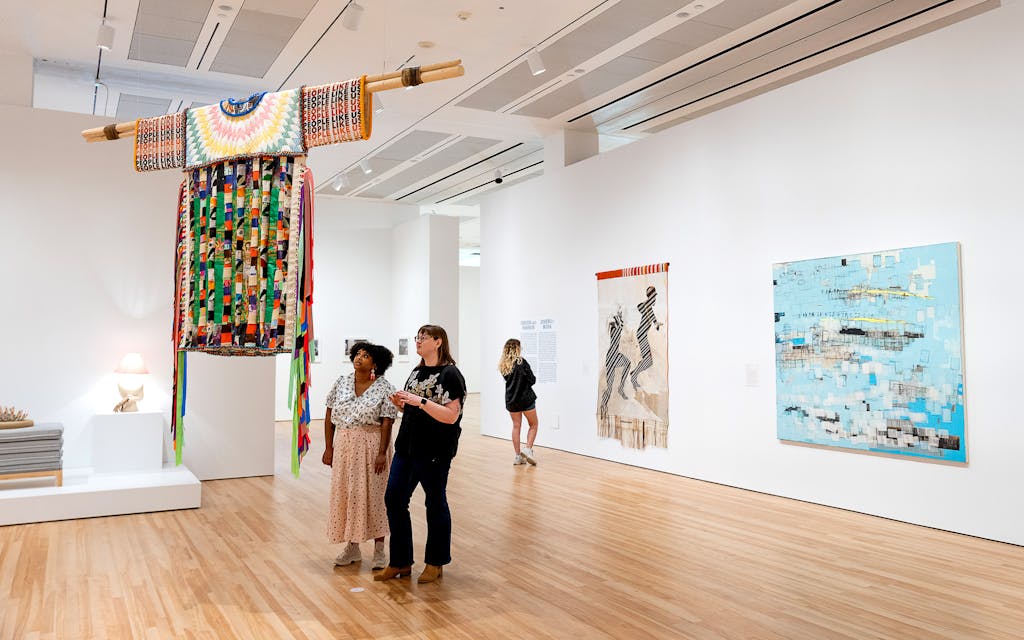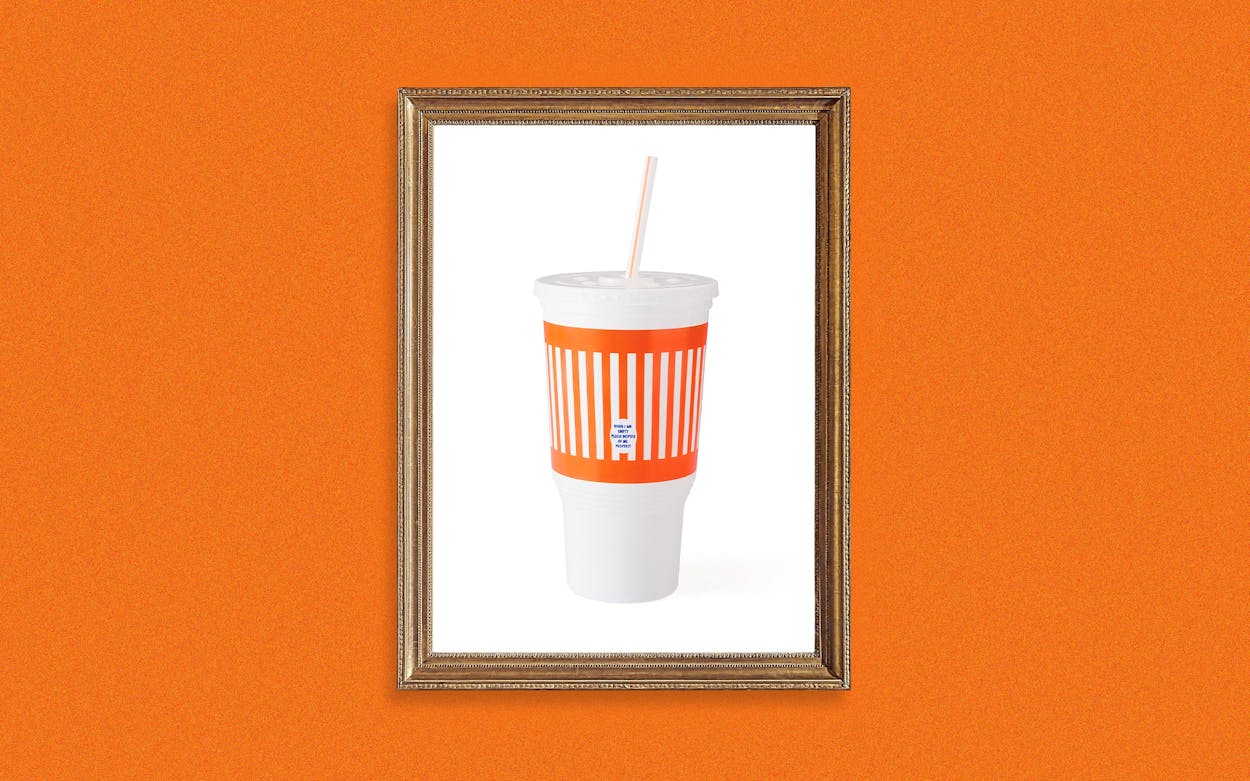A Whataburger cup is not a Greek urn or a Roman vase or any other sort of vessel you’d expect to find in a fine-art museum collection. Yet turn a corner in “Day Jobs,” an exhibit at the Blanton Museum of Art in Austin, and there one appears in all its orange-and-white glory, enshrined in a six-foot-tall portrait by the late photographer Chuck Ramirez.
“Whatacup.” The sheer size of the thing stops you in your tracks so that you read the small blue text on the packaging: “When I am empty please dispose of me properly,” it says. Suddenly what’s on tap becomes a surprising meditation on mortality—one that grows all the more poignant when you learn the facts of Ramirez’s life and death.
Born in San Antonio in 1962, Ramirez got his start working as a graphic designer at H-E-B and later became its art director. Though he quit in 1999, the experience defined his personal art. He often played with text and isolated his subjects against white backgrounds. Those subjects include beat-up piñatas, withering floral arrangements, and other trash-bound consumer goods, which Ramirez printed as big as his budget would allow—partly as a protest against throwaway culture, and partly because he identified with them.
As a gay man in an increasingly conservative state, Ramirez had a keen sense of his own disposability. In the early 1990s, he contracted HIV, and he also suffered from heart problems. What ultimately took his life, though, on November 6, 2010, was a fluke bicycle accident, just a block from his duplex in Southtown. To say that his friends and loved ones “disposed of him properly” would be a crude description of the outpouring that followed: More than seven hundred people, including then-mayor Julián Castro, turned out for his memorial service.
All this informs a contemporary reading of Whatacup, which Ramirez shot at a commercial photography studio in Houston in 2002. In an interview a couple years before his death, he explained that the fountain cup’s script typified everything he’d been trying to say through his art. “That little statement . . . it seemed like an epitaph for something,” he said. But would the artist have even noticed such a detail if not for the years he spent designing packaging at H-E-B?
The survival work artists do and the ways it influences the art they make is the theme of “Day Jobs,” a first-of-its-kind show curated by Veronica Roberts and Lynne Maphies and on view through July 23. It features 38 artists whose professional exploits took them far from the art studio, to do things such as arrange furniture at IKEA, care for ICU patients, and scrub dishes in restaurants. Some may view these side careers as necessary evils that pay the bills but get in the way of making art. But for the artists featured in “Day Jobs,” these lived experiences give the works meaning. Without day jobs, their work may never have seen the light of an exhibition hall.
Nine-to-fives have long been powerful source material for even the most famous artists—and the show includes plenty of those. Andy Warhol supported himself with commercial illustration throughout the 1950s; James Rosenquist painted Times Square billboards and Fifth Avenue window displays. Both men used the visual language and content of advertising to poke at consumer culture—a subversive reapplication that clearly inspired Ramirez.

Many other artists’ day jobs also put them in close contact with the societal issues their work explores. In the 1970s, Fred Wilson worked as a freelance museum educator in New York. It led him to explore the politics of museum displays through works like 1993’s Grey Area (Brown Version), which features five plaster busts of the ancient Egyptian queen Nefertiti in a light-to-dark gradation of skin tones, suggesting the historical debate surrounding the Egyptian queen’s racial identity.
Similarly, Ragen Moss, a transactional lawyer in Los Angeles, cites legal script on sculptures such as Impactor (2022). It’s scribbled with a quote from former Supreme Court justice Harry Blackmun, who wrote in a dissenting opinion in 1989 that “compassion need not be exiled from the province of judging.” Emblazoned with his words, Moss’s sculpture dangles from the ceiling, its shape simultaneously evoking a human torso, a body bag, and a chrysalis—the latter maybe incubating a better system of American justice.
For other artists, the connection between their day jobs and their art is more process-based. The Houston-born artist Virginia Lee Montgomery, known by her artistic pseudonym VLM, works as a graphics facilitator, which involves standing before whiteboards at corporate meetings and using markers to translate speakers’ words into images for audiences. In an interview, Montgomery explained that her art similarly involves turning her thoughts into symbols—though here, the audience’s comprehension isn’t a goal. “[It’s] much more a space for my own subconscious to … run amok,” she says.
Set to a soundtrack of wind chimes and water drips, Montgomery’s Pony Cocoon stars a green Luna moth that breaks free of its protective case inside a sterile hotel room. It’s partly a metaphor for the artist, who appears at the beginning of the film and performs stretches in stifling business attire. But the film also brings to mind life’s cyclical nature: After unfurling their wings, most moths live a week, during which they mate and lay eggs, then die. Nearby in the same gallery, an oversized sculpture of an egg, also by Montgomery, suggests this cycle. But here, the message isn’t mortality, so much as the hope of new life.






